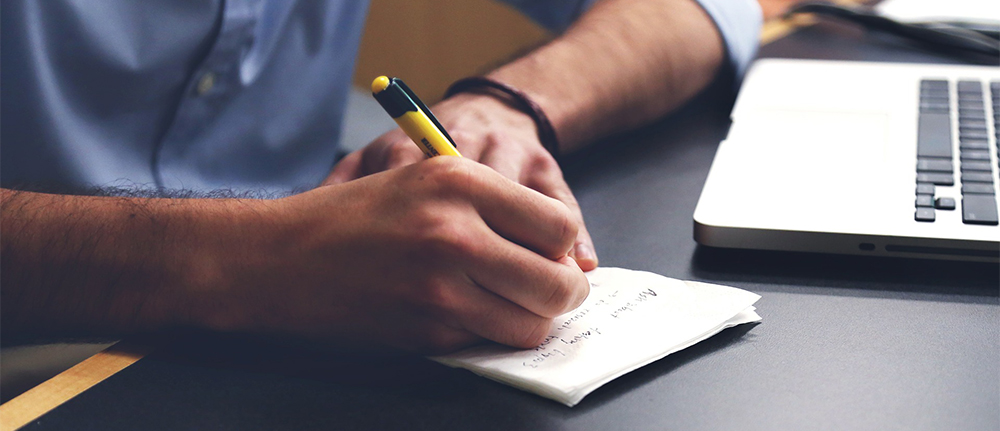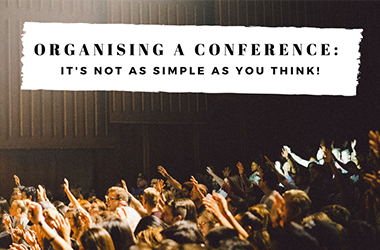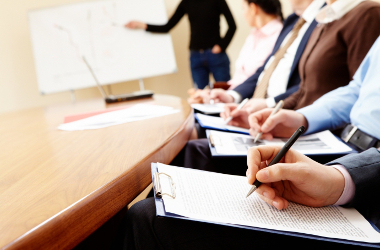How to take notes more efficiently in a meeting
Note-taking is a necessary evil when taking part in a meeting or seminar, unless you happen to be gifted with a photographic memory. Taking notes allows you to compile key information that you may need later on, without you having to try to recall it accurately off the top of your head.
What’s more, the act of taking notes actually helps you remember more of the information relayed to you. The issue of optimising your note-taking during meetings may seem trivial at first, but heeding this advice will serve you well – especially at those difficult meetings where the room is crowded and it feels more like a cattle market. It only takes a bit of effort torapidly optimise your note-taking. Just follow our advice below to learn how to become more efficient when it comes to documenting your business meetings. Let’s start with the most logical step: getting rid of any objects that might distract you.
Put distractions out of reach
When the meeting starts, we recommend that you switch off your mobile phone (or put it on silent). This is a detail that we don’t necessarily always think of, but it can play a key role in improving note-taking. When you put away your phone, you avoid a considerable number of distractions. What with texts from your partner, work emails, and calls from clients, you risk repeatedly losing track of the meeting. So your first step towards optimizing your note-taking is to put away your mobile phone, and any other gadgets that might disturb your concentration. Its’ also advisable to switch off your tablet (if you’re not using it to take notes), or possibly even the internet connection on your laptop. Trust us: once you’ve isolated all of the elements likely to distract you, you will notice an immediate improvement in your note-taking efficiency.
What should you use to take notes with?
Next comes the question of which tools to use when taking notes. Every type of media has its supporters and opponents, although none are inherently superior to the others: it’s more a matter of preference.
- Does the traditional format (notebook and pen) not really meet your requirements in terms of productivity? While deciphering your notes is more complicated with this method, it offers incomparable flexibility when it comes to adding diagrams and graphs to your notes, so notepads and pens still have a bright future ahead of them.
- As for mobile devices: for employees with a fast typing speed, taking notes on a laptop is probably the most efficient option. This technique has the advantage of allowing you to easily reorganize your notes once youv’e returned to the office.
Taking notes with a laptop
In terms of the machine itself, the most important advice we can give you firstly concerns the keypad. It is very important to ensure that the keys aren’t too close together, or taking notes becomes decidedly more awkward, which will decrease your productivity. The other piece of advice we can give you concerns the size of your laptop: try and opt for a compact machine that is specially intended for work. This brings us back to the issue of distractions, as the smaller your computer is, the less tempted you will be to use it to distract yourself, and your note-taking will increase in terms of quality as well as quantity.
The importance of abbreviating
For efficient note-taking, you need to find the right balance between the amount of text and the information it contains. In other words, your notes might be a little untidy, but should nevertheless be full of relevant information. However, some thought needs to go into even “careless” notes: if you want to write notes quickly but also understand what you have written, you need to develop your own system of abbreviations. Learning to abbreviate the words that you use most often will considerably improve your note-taking abilities in meetings.
Optimising your note-taking requires a little practice
In conclusion, if you really want to optimize your note-taking, you should devote a bit of free time to training yourself. In fact, there are apps that help you do this. Some help you improve your typing habits, and, as a result, save you a considerable amount of time, which is exactly what you need in meetings. In meetings more than anywhere else, you need to be both quick and efficient in your note-taking. Therefore we strongly advise you to take some time using software that helps optimize your typing speed, especially as it will help you speed up on other tasks, too. If you take our advice and make a little effort, in no time at all, youl’l see your note-taking improve in terms of quality as well as efficiency.







 English
English  Français
Français  Nederlands
Nederlands